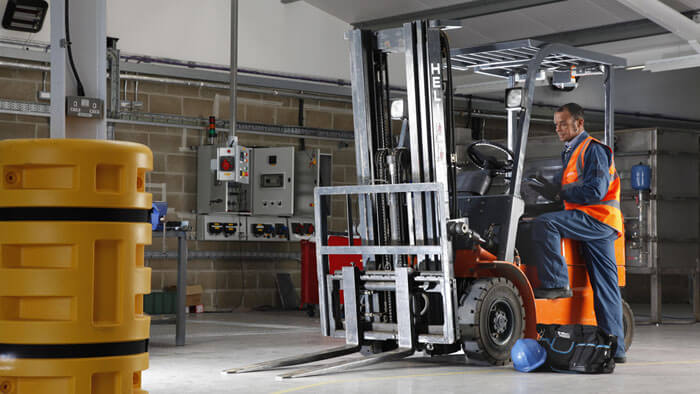What do Equipment Inspections and the 3 Worker Rights Have in Common?
Nov 25, 2019 Forklift, Workplace InspectionsAs citizens of Ontario, we know that when we go to work, we have rights. When you ask any worker what their “3 Worker Rights” are – they should come back with the “Right to Know,” the “Right to Participate,” and the “Right to Refuse Unsafe Work.”
These “3 Worker Rights” are fundamental to worker safety. They might not be consciously recognized in their applications in the workplace, but they creep up in a multitude of ways. Now the Ministry of Labour has them explained as follows:
- The “right to know” about any hazards to which they may be exposed. The requirements of the Workplace Hazardous Materials Information System (WHMIS) are an important example.
- The “right to participate” to be part of the process of identifying and resolving health and safety concerns. This right is expressed mainly in the requirements for Joint Health and Safety Committees and representatives.
- The “right to refuse work” that they believe is dangerous and, under certain circumstances, certified Joint Health and Safety Committee members could stop dangerous work.
Now getting buy-in with participants in a training session is not always easy. Finding a way to relate what they already know, to what they need to learn is a common tool. As already established, if they know one thing at work, it is they have “3 Worker Rights”. Now, this is how I explain pre-use equipment inspections.

Why are pre-use equipment inspections so important? Because they are our “3 Worker Rights” represented on a sheet of paper. Sound silly? Let us look at it in detail:
The Right to Know
What does this entail? The pre-use inspection document lists everything that has to be checked on a piece of equipment. Now we are supposed to complete these at the beginning of each shift, but perhaps the equipment is not used daily. The benefit of having the document it your hands is that you have a list of what is required to be inspected. The “The Right to Know” is supported by access to this information. The employer provided training covers with all of the associated hazards that are listed on the pre-use inspection document.
The Right to Participate
Well this starts with actually completing the equipment inspection! Participation in safety is actively engaged in reporting and controlling hazards in the workplace. When completing a pre-use inspection, physically evaluating each of the listed requirements is one way to participate. The worker’s responsibility does not end there, however. Simply documenting issues on a form does not fulfill the reporting requirements under S. 28 (1) (c) OHSA. A worker must inform the supervisor of issues found if any.
The Right to Refuse Unsafe Work
Of the “3 Worker Rights” workers have, this is what they will always list first when asked. We do have the ability to refuse unsafe work without the fear of reprisal. However, how does this tie into the completion of pre-use inspections? Well, not signing off on a piece of defective equipment and operating it anyway. Refusing to use the equipment until it is has been properly repaired is in the spirit of this right.
The “3 Worker Rights” are one of the fundamentals that guarantee a worker the ability to contribute to a safe work environment. All elements of the Internal Responsibility System (Employer, Supervisor, and Worker) work in tandem to create and maintain a sustainable safety culture in any organization. If something as common as a pre-use equipment inspection can be seen to represent something crucial in the workplace, then why do we throw those rights away and skip it? Perhaps the importance of the document has never been explained.
Geoff Rowatt | CHRP | Safety Trainer






